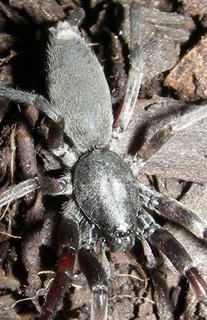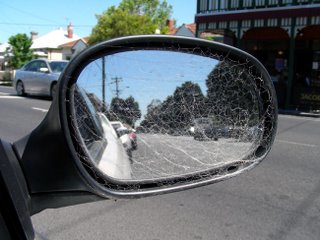... spiders were the harbingers of the Great Plagues
Isbister, 2004
 Necrotising arachnidism is a painful and persistent skin condition resulting from spider bites. Although it known for many years in the United States, it was not reported from Australia until the 1970s. The number of incidents increased. In 1987, a case described in the Medical Journal of Australia led venom researcher Struan Sutherland to speculate that the blame might lie with the white-tailed spider (Lampona), although the animal responsible for that bite was not identified.
Necrotising arachnidism is a painful and persistent skin condition resulting from spider bites. Although it known for many years in the United States, it was not reported from Australia until the 1970s. The number of incidents increased. In 1987, a case described in the Medical Journal of Australia led venom researcher Struan Sutherland to speculate that the blame might lie with the white-tailed spider (Lampona), although the animal responsible for that bite was not identified.It didn't take long before the locals were brandishing pitchforks and flaming torches at the white-tails. Despite the lack of evidence connecting the bites of this species with skin ulcers, the story gained energy. Such was its force that, in some cases, GPs misdiagnosed conditions such as basal cell carcinoma, anthrax infection and chemical burns as white-tailed spider bites.
When clinical toxicologist Geoffrey Isbister and arachnologist Mike Gray examined 130 confirmed cases of white-tailed spider bite in New South Wales, they found that none resulted in necrosis. Patients reported pain, redness and itching at the site but no persistent symptoms.
 Nor were black house spiders (Badumna) or wolf spiders (Lycosidae) responsible for the ulcers. In fact, only one group of spiders has been conclusively linked to necrotising arachnidism—the American recluses (Loxosceles). Venom from these spiders contains the enzyme sphingomyelinase, which damages cell membranes. It is not present in other spiders. Interestingly, at least two Loxosceles species have been introduced into southern Australia and are regarded as medically important. Even so, the white-tailed spider remains a popular scapegoat.
Nor were black house spiders (Badumna) or wolf spiders (Lycosidae) responsible for the ulcers. In fact, only one group of spiders has been conclusively linked to necrotising arachnidism—the American recluses (Loxosceles). Venom from these spiders contains the enzyme sphingomyelinase, which damages cell membranes. It is not present in other spiders. Interestingly, at least two Loxosceles species have been introduced into southern Australia and are regarded as medically important. Even so, the white-tailed spider remains a popular scapegoat.I'll leave the last words on the matter to Julian White:
- When presented with skin damage of initially uncertain origin, medical practitioners must look for all the many and varied non-spider-bite causes for such damage, leaving necrotising arachnidism as a diagnosis of last resort and uncertain validity after all other possibilities are excluded. Any future research into necrotising arachnidism in Australia should focus on accurately determining the cause.
Photographs
Above: White-tailed spider
Below: Black house spider web on my wing mirror. (I don't wash the car very often.)
Read more
Isbister, G.K. (2004). Necrotic arachnidism: the mythology of a modern plague. The Lancet 364: 549 – 553.
Isbister, G.K. & Gray, M.R. (2003). White-tail spider bites: a prospective study of 130 definite bites by Lampona species. Medical Journal of Australia 179 (4): 199 – 202.
White, J. (2003). Debunking spider bite myths. Medical Journal of Australia 179 (4): 180 – 181.